
- Shandong Loyal Industrial Co.,Ltd.
- Macaroni Production Machine Instant Noodle Machine Biscuit Making Machine
Home> Processing> Efficient and Energy-Saving Pet Food Production Line: Innovations for Sustainable Manufacturing

Efficient and Energy-Saving Pet Food Production Line: Innovations for Sustainable Manufacturing
2025-05-06 10:46:091. Introduction: The Growing Need for High-Efficiency Pet Food Production Lines
The pet food industry has experienced significant growth over the past few decades, driven by the increasing number of pet owners and the demand for high-quality, nutritious pet food products. According to the American Pet Products Association (APPA), the U.S. pet food market alone reached a staggering $42 billion in 2020, with the global pet food market expected to grow at a compound annual growth rate (CAGR) of 4.5% from 2021 to 2028. This growth reflects the changing attitudes of pet owners, who are now more focused on providing their pets with premium, nutritious food that supports their overall well-being.
As the demand for pet food continues to rise, manufacturers are under increasing pressure to meet production targets while minimizing costs and reducing their environmental impact. This is where the concept of high-efficiency pet food production lines becomes crucial. With rising operational costs and increasing environmental regulations, manufacturers are looking for ways to enhance the efficiency of their production processes.
One of the most significant factors driving the need for high-efficiency pet food production lines is the need to reduce energy consumption. High efficiency and energy savings have become essential goals for manufacturers looking to stay competitive. Energy costs, especially in food manufacturing, can account for a significant portion of overall expenses. As a result, adopting energy-efficient technologies is no longer optional but a requirement for the long-term success of the industry.
Innovations in high-efficiency pet food production lines focus on maximizing productivity, improving product quality, and reducing waste while using fewer resources. These innovations are not just limited to energy-saving technologies; they also include automation, smart control systems, and sustainable practices. According to Dr. Lisa Bryant, an expert in food manufacturing, "The future of pet food production lies in embracing innovations that enhance energy efficiency while also promoting sustainability. High-efficiency production lines will be the backbone of the next generation of pet food manufacturing."
The growing need for pet food production line that incorporate high efficiency and energy savings reflects the industry's response to market demands and environmental considerations. In this article, we will explore the key features of these high-efficiency systems, the technological innovations driving energy savings, and the broader impact of these systems on both production efficiency and environmental sustainability.
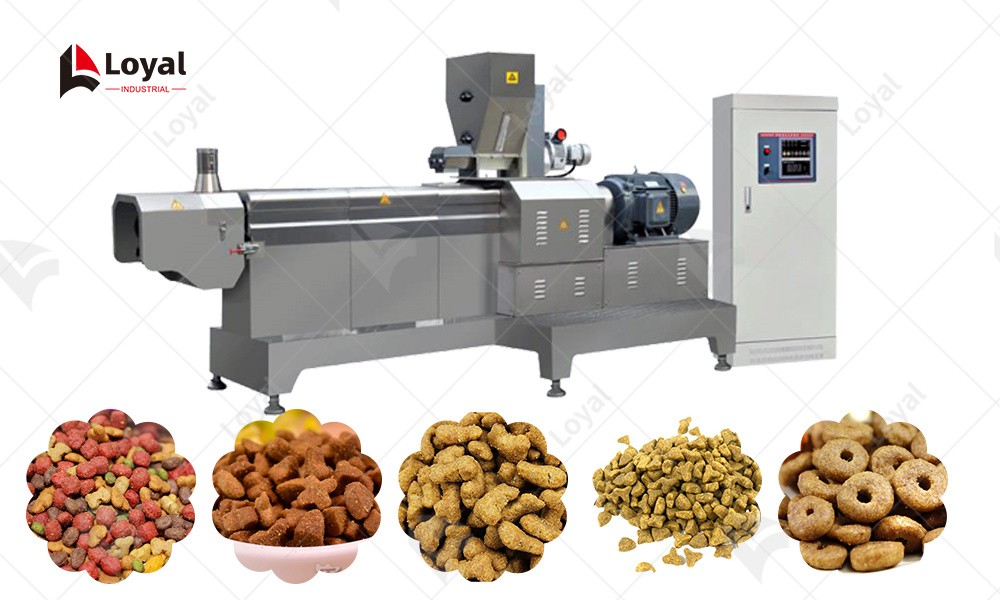
2.Key Features of High-Efficiency Pet Food Production Lines
In an era where energy costs are rising and environmental concerns are at the forefront of manufacturing processes, high-efficiency pet food production lines have become essential. These advanced systems are designed to meet the increasing demand for high-quality pet food while reducing energy consumption, improving production speed, and minimizing environmental impact. Below are the key features of Pet food production line that incorporate high efficiency and energy savings.
Energy-Saving Technologies: Efficient Motors and Smart Controls
One of the most notable features of high-efficiency pet food production lines is the integration of energy-saving technologies, such as efficient motors and smart control systems. Energy-efficient motors are specifically designed to reduce power consumption without sacrificing the performance of machinery. These motors ensure that essential equipment like mixers, conveyors, and ovens operate at optimal efficiency, using less energy compared to traditional systems.
Moreover, smart control systems play a vital role in optimizing the energy consumption of the entire production line. These systems use real-time data to adjust the operation of equipment based on actual needs, ensuring that energy is only used when necessary. For instance, the system may automatically reduce the speed of motors or adjust the temperature in ovens when full capacity is not required. This capability not only saves energy but also reduces wear and tear on the equipment, leading to fewer repairs and maintenance costs.
Increased Production Capacity and Speed without Compromising Quality
While energy savings are crucial, maintaining or increasing production capacity is also a primary goal for manufacturers. High-efficiency pet food production lines achieve this by integrating automation and advanced process control systems. Automation allows for faster production cycles, higher throughput, and greater consistency in the final product, all while maintaining or even improving product quality. Automated systems can handle repetitive tasks like mixing, filling, and packaging without the need for human intervention, which reduces labor costs and potential errors.
Additionally, technologies like continuous cooking systems and multi-stage drying processes ensure that pet food is cooked and dried evenly at faster speeds, without compromising its nutritional value or flavor. By improving production speed, these systems allow manufacturers to meet rising demand while minimizing resource consumption and waste.
Sustainable Practices: Eco-Friendly Materials and Processes
Sustainability is another key aspect of high-efficiency pet food production lines. As manufacturers face increasing pressure to reduce their environmental impact, many are turning to sustainable practices in their production processes. These practices include the use of eco-friendly materials in both production and packaging, such as biodegradable or recyclable packaging and sustainable sourcing of raw ingredients.
Additionally, high-efficiency systems are designed to minimize waste throughout the production process. For example, advanced technologies in heat recovery systems capture waste heat from production processes and recycle it to maintain optimal production temperatures, reducing the need for external heating energy. Similarly, water recovery systems ensure that water used in cooking and washing is efficiently reused, minimizing both water waste and the need for additional water resources.
Modular and Scalable Design
Another important feature of pet food production lineis their modular and scalable design. These production lines can be customized to fit the specific needs of a manufacturer, whether they are producing small batches or large-scale commercial quantities. This flexibility allows manufacturers to easily upgrade their systems as demand increases, ensuring that the production line can grow alongside the business without the need for a complete overhaul.
The modular design also means that specific components of the production line can be replaced or upgraded independently, reducing downtime and overall costs. Manufacturers can adapt their systems to incorporate the latest energy-efficient innovations, ensuring their production lines remain competitive and sustainable in the long term.
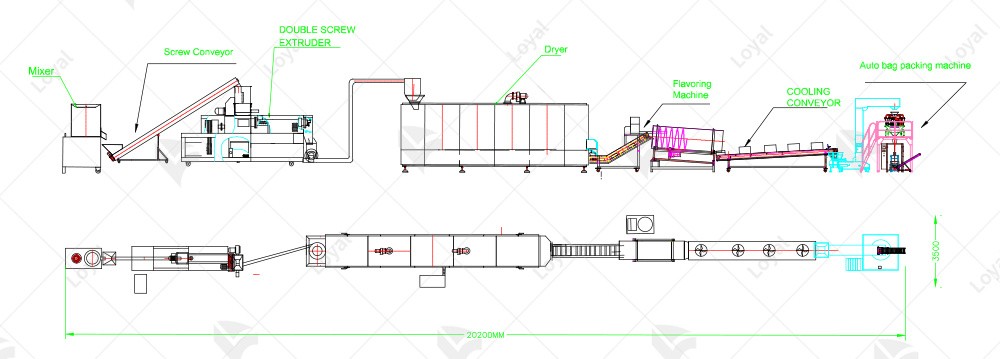
3.Technical Parameters of the Pet Food Making Machine
The Pet Food Making Machine offers a range of models to suit various production capacities, with each model designed to meet different needs in terms of output and power consumption. Below are the specifications for each model in the pet food extrusion line:
|
Model |
Extruder Power |
Output |
Dimension |
|
LY 65 |
33.87kw |
120-150kg/h |
2500*930*1850mm |
|
LY 70 |
44.87kw |
200-250kg/h |
3000*850*1300mm |
|
LY 85D |
93KW |
400-500kg/h |
4200*900*2200mm |
|
LY 95P |
124.4KW |
1000-1200kg/h |
5500×2400×3200mm |
Model Breakdown:
1.LY 65 (120-150 kg/h)
l Extruder Power: 33.8KW
l Capacity: 120-150 kg/h
l Dimensions: 2500*930*1850mm
This model is ideal for smaller-scale production with moderate energy consumption, designed to handle lower volumes while maintaining efficiency.
2.LY 70 (200-250 kg/h)
- Extruder Power: 44.87 kW
- Capacity: 200-250 kg/h
- Dimensions: 3000*850*1300mm
The LY 70 offers a middle ground for production, suitable for manufacturers who need a higher output than the LY 65 without drastically increasing energy use.
- LY 85D (400-500 kg/h)
- Extruder Power: 93 kW
- Capacity: 400-500 kg/h
- Dimensions: 4200*900*2200mm
This model is built for medium to large-scale production, providing a balance between power consumption and high output. It's ideal for manufacturers needing significant production capacity.
4.LY 95P (1000-1200 kg/h)
- Extruder Power: 124.4 kW
- Capacity: 1000-1200 kg/h
- Dimensions: 5500×2400×3200 mm
The LY 95P is designed for high-volume production, delivering the highest output. This model is particularly suited for large-scale manufacturers with high demand for pet food products.
Efficiency and Customization
These machines are designed with energy efficiency in mind, each model balancing output with power consumption to ensure cost-effective operation. The extruder power for each model is specifically tailored to handle the required output, allowing manufacturers to optimize their energy usage based on production needs.
The dimensions of each machine ensure that they fit into various production floor plans, while also providing enough flexibility to scale operations up or down, depending on market demands. Whether manufacturers are producing small batches or large quantities, these models allow for customization to meet specific production requirements.

4.Future Trends: What’s Next for High-Efficiency Pet Food Production?
As the pet food industry continues to grow and evolve, the demand for high-efficiency pet food production lines remains at the forefront of manufacturing innovations. The future of pet food production will see even more advanced technologies focused on high efficiency and energy savings , ensuring that production processes are not only faster but also more sustainable and cost-effective.
Emerging Trends in Energy-Saving Systems
The next generation of energy-saving systems in pet food production will focus on the further integration of AI and machine learning. These technologies will enable predictive maintenance, real-time process optimization, and the ability to forecast production needs. For instance, AI can analyze data from the extruder, dryer, and other key machinery to adjust energy use dynamically, based on factors such as the product type and production volume. This will reduce energy waste and ensure a smoother production process.
The Role of IoT and Automation
The integration of the Internet of Things (IoT) into high-efficiency pet food production lines will allow for even more granular control over energy consumption. IoT-enabled devices will collect and analyze data from all stages of production, offering insights into potential inefficiencies and allowing manufacturers to make adjustments in real-time. This will lead to more efficient operations and a reduction in overall energy use.
Sustainable Energy Sources
As sustainability becomes a more critical focus in all industries, high-efficiency pet food production lines will increasingly incorporate renewable energy sources like solar and wind power. Manufacturers are expected to rely more on green energy to power their machinery, which will reduce their carbon footprint and help them meet stringent environmental regulations. Additionally, sustainable packaging solutions will become more prominent in the industry, driven by consumer demand for eco-friendly products.

5.Conclusion: The Future of Sustainable Pet Food Production
The pet food industry is rapidly evolving, driven by an increasing demand for high-quality products, energy efficiency, and sustainability. High-efficiency pet food production lines play a pivotal role in meeting these demands, providing manufacturers with the tools needed to produce pet food in a more efficient, cost-effective, and environmentally friendly manner.
By incorporating innovations such as energy-efficient motors, smart control systems, and advanced heat recovery, manufacturers can reduce energy consumption and operational costs while maintaining high production standards. The integration of automation and AI technologies ensures that these production lines operate at peak efficiency, making real-time adjustments to energy use and optimizing production cycles. With these innovations, manufacturers are not only able to meet the growing demand for pet food but also stay ahead of industry trends that prioritize sustainability.
The future of high-efficiency pet food production will see even more advanced technologies driving further energy savings, including the integration of IoT systems for real-time monitoring and renewable energy sources to power operations. These technologies will allow manufacturers to reduce their carbon footprints, improve product consistency, and minimize waste, all while keeping operational costs in check.
As consumer expectations shift toward more sustainable products, the pet food industry will be under pressure to adopt these innovations. For manufacturers, this means an opportunity to gain a competitive advantage by embracing high efficiency and energy savings solutions. Those who invest in these technologies today will not only benefit from improved production processes but also contribute to a greener, more sustainable future.
In conclusion, the continued evolution of high-efficiency pet food production lines represents a critical step toward achieving a more sustainable and efficient pet food industry. Manufacturers who embrace these innovations will be better equipped to meet market demands while playing a part in reducing their environmental impact.
If you want to know more story about LOYAL brand, here can help you - https://www.facebook.com/foodmachineloyal
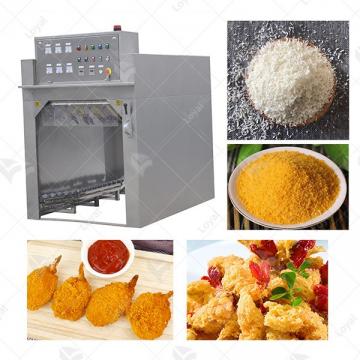 Commercial Japanese Panko Bread Crumb Grinder Machine
Commercial Japanese Panko Bread Crumb Grinder Machine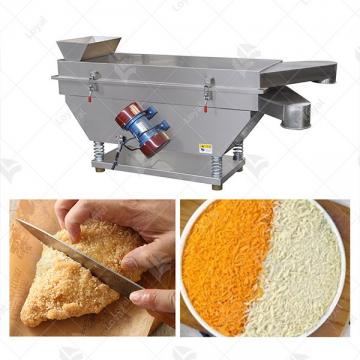 Japanese Bread Crumbs Processing Line
Japanese Bread Crumbs Processing Line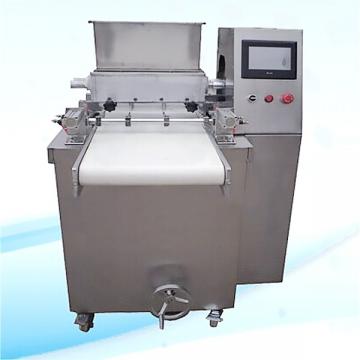 Automatic Cookies Making Machines
Automatic Cookies Making Machines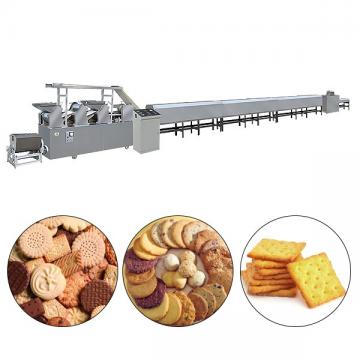 Fully Automatic Biscuit Making Machines
Fully Automatic Biscuit Making Machines